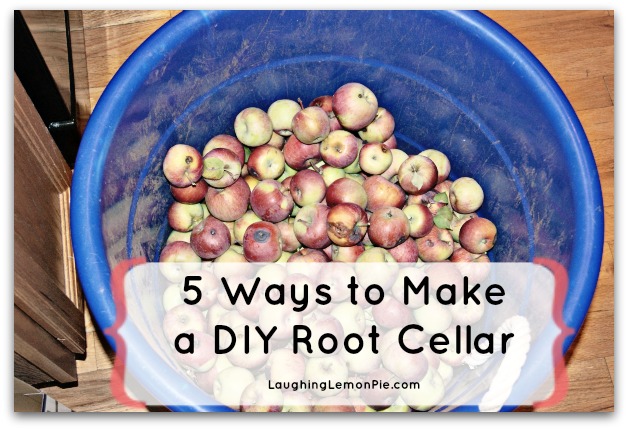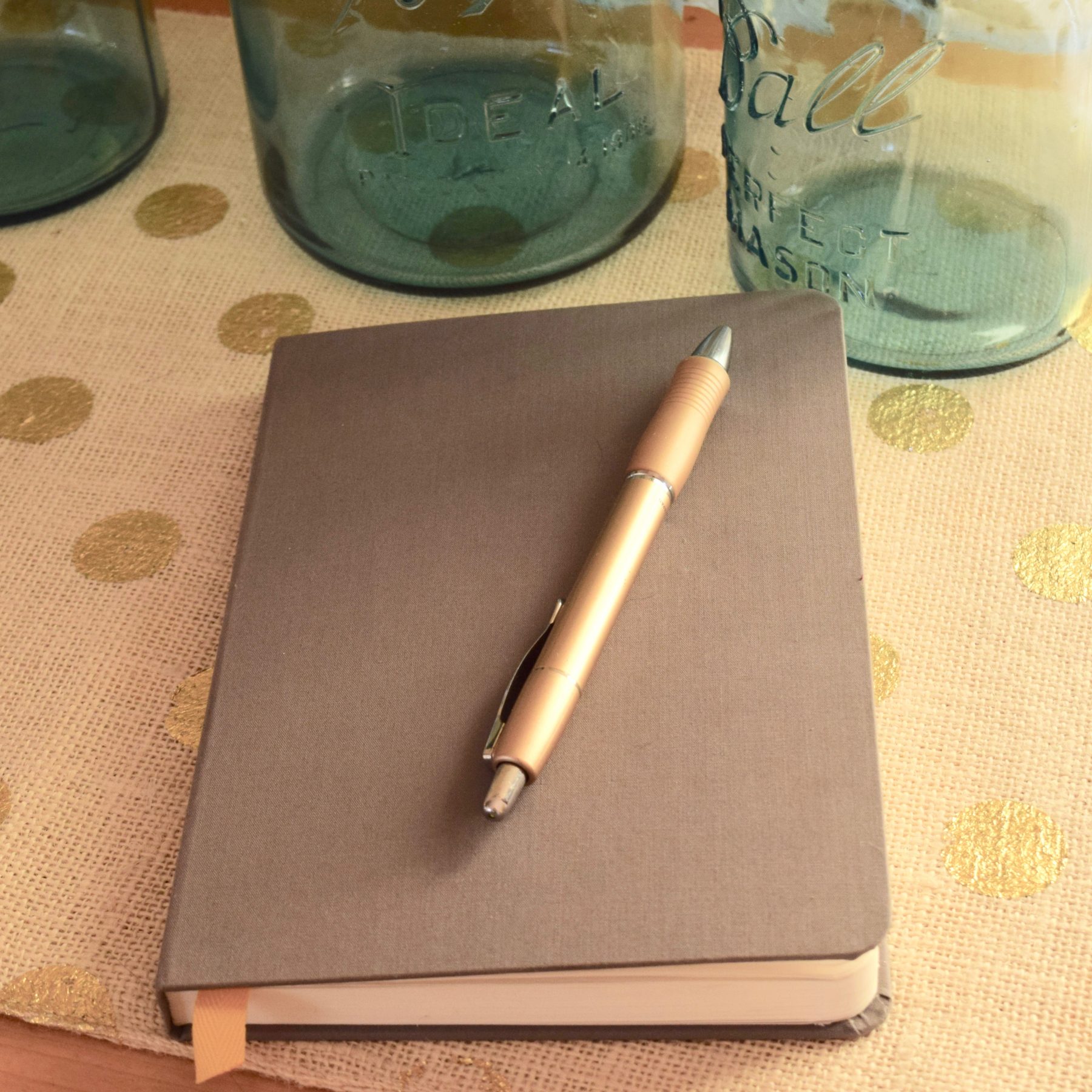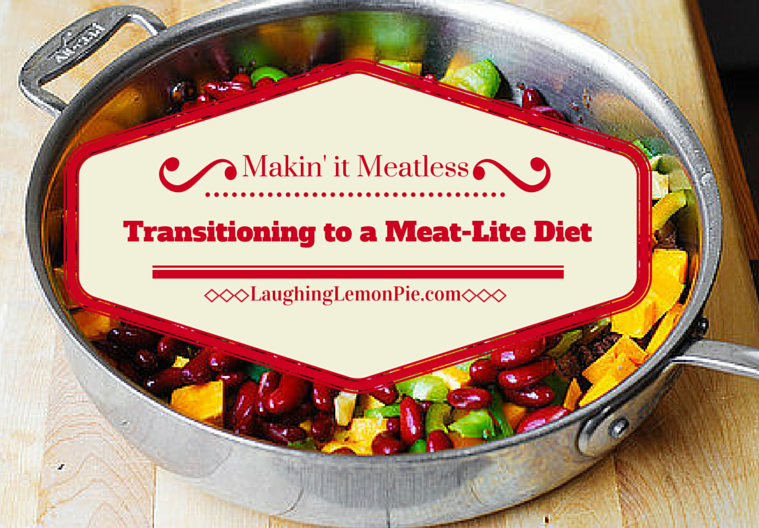Every day when my daughter and I go out in the back yard to play, she runs up to our apple tree and starts saying, “More! More!”—which is 17-month-old for “May I please have an apple?”
Believe it or not, she’ll eat pretty much the whole thing while wandering around, exploring and playing in the back yard, so I’m always happy to give her one.
Our apples are ready to pick… I’ve just been putting it off until I have time to deal with them. But last year, I ran a little experiment: I put a box of apples up in our garage to see how well they would keep. I just stored them in a cardboard box in between layers of newspaper.
We lost some, of course, but I was shocked (and delighted!) to discover quite a few made it all the way through the winter and were still firm and tasty by spring.
If you’ve got a garden or a farmer’s market still going strong, you’ll want to take advantage of this week’s Sustainable Eating Tip No. 9, which is…
Store Fruits and Veggies in a DIY Root Cellar
We’ve talked about preserving the bounty of the harvest before (and how it doesn’t have to be hard or scary), but we didn’t talk about the single simplest method of putting up food for the winter: just, well, putting it up.
In the old days, nearly every house had a root cellar or an unfinished basement that was just perfect for storing winter root vegetables and hardy fruit, like apples. The temperature would stay at 40 degrees or below in these little underground storage spaces and it would be dark and dry—perfect conditions for keeping the veggies fresh all winter.
But nowadays most of us don’t have a root cellar of any sort, so we have to get creative.
First, here are some general guidelines for storing produce over the winter:
- Only store fruits and vegetables in perfect condition; any cut, bruised, crushed or decaying produce is likely to infect the rest of the batch and cost you a lot of your crop.
- Store produce as close to the time it was harvested as possible, and as close to the state they were in when they were harvested—tops still on, dirt still attached.
- Cool produce completely before storing.
- Do not store apples with potatoes or carrots because apples give off ethelyne gas which can cause potatoes to sprout and carrots to taste bitter.
- Make sure to store produce with plenty of ventilation. You can put layers of newspaper, straw, sawdust or peat moss between the layers of produce to help keep each piece separated and well ventilated.
- Keep a bucket of water wherever you store your crops; water will freeze before your veggies, and if you notice that the water is frozen, you can take steps to make sure your food doesn’t freeze as well.
- Check out this document for tips on storing specific kinds of produce—everything from apples to tomatoes!
Here are 5 tips for storing produce over the winter that you can customize to your own living situation (and level of commitment!):
- If you’re blessed with a basement that stays between 50 and 60 degrees in the winter, you can still use it for shorter-term storage of veggies like pumpkins and winter squash, and maybe even apples.
- An old refrigerator can also be used to store winter fruits and veggies; make sure it is COMPLETELY dry and set it to around 40 degrees.
- I personally had decent luck with storing my apples in my garage; I live in Colorado, and my garage stays pretty cold in the winter, but generally does not freeze because it is enclosed and attached to the house. This article details how to store carrots and potatoes in a garage or similar space.
- If you have a yard, you can literally dig a hole in the ground and store your veggies that way—try one of these methods of burying a bucket, a trash can, or another container to create a mini root cellar.
- This article from Organic Gardening shows how to store your veggies in the garden all winter!
Got any other tips for storing produce over the winter? Please share in the comments below!
I’m challenging myself to eat more sustainably over the next year—and documenting the steps I take in this series, inspired by an article in the Jul/Aug 2010 issue of Whole Living Magazine. Want to join me? Leave a comment below and pledge to eat more sustainably this year!






Ahh to have a basement! I remember going to Kalamazoo to visit my grandmother and her basement smelled fabulous. She had boxes of apples – various kinds for various uses – and gallon jugs of cider, both hard and not, stored with her other root veggies in wooden boxes on shelves in a closet down there. It was always dark until we flipped on the single bulb in the center of the room – and the aroma of that basement full of apples and onions and such, and clean laundry and mustiness inherent to basements was just the best!
Great tips! I live in apartment with a small outdoor closet on the balcony and you’ve inspired me to see it with new eyes as a root cellar!
Thank you! We had a closet like that at our last place, and I think it would be a great idea to try it as a root cellar! Just be sure to use that frozen water trick so you can make sure your veggies don’t freeze.
I love the idea of a using my garage as a root cellar. My garage is not attached to the house nor is it insulated. If I use the water trick regarding freezing do you think I could try apples and etc.? Give me your thoughts on it.
thanks
Depending on where you live, you’ll probably have to watch it more carefully. I’d try insulating the boxes you store stuff in by using styrofoam coolers with holes poked in the sides (you still want plenty of air circulation). Just remember: anything you buy at this time of the year (apples, etc.) has already been stored in a warehouse somewhere for a couple of months, so it’s not at its freshest. But you could buy a few just to test. Good luck!